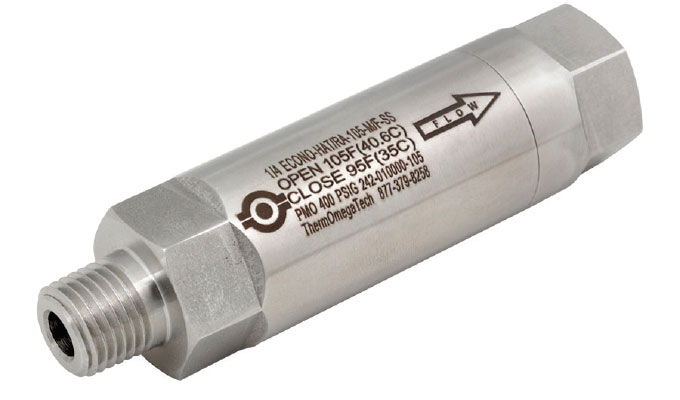For over thirty-five years, ThermOmegaTech® has been a leader in the design and manufacture of self-actuating temperature control technology, serving a multitude of industries and providing solutions for a wide range of applications. The company produces thermal relief valves that provide a critical role in delivering safe drinking water to countless customers. Nick Tallos, ThermOmegaTech’s vice president of engineering, sat down with MPT to explain their benefits.
MPT:What applications are the ThermOmegaTech range of thermal relief valves designed for?
Nick Tallos: The primary application we found for one of our valves, which is used as a thermal relief valve, is for domestic water supply booster pumps—so we’re not talking about chemical or processing pumping with this application; the focus is on potable water for buildings. And in this application, we discovered that the pumps need to be sized for maximum demand, and they have to be run to maintain pressure throughout the building. In other words, you can’t shut it off. Basically, the pumps need to be able to maintain the maximum flow to meet building demands and do so while holding the correct pressure.
However, the fact of the matter is that, most of the time, the pumps are not actively pumping that kind of capacity. hen the water demand in the building is less than the maximum demand the pump is running on an inefficient portion of the pump curve and the excess pump energy goes into heating the water inside the pump. Therein lies, if that extra heat causes a problem, the role of our valves. These valves provide the solution when what is supposed to be a “cold water” pump sits idle, heating up the water without any thermal relief.
MPT: How would you best describe the benefits of the ThermOmegaTech range of valves? What are your customers looking for?
Nick Tallos: We’ve had customers report that idling pumps can sometimes elevate water temperatures to what we’d consider standard for hot water taps or even scalding hot. So building managers are obviously concerned about someone in their building turning on what should be a cold water tap and unexpectedly getting hot water. Fortunately, I’ve not heard of any of our customers relaying this happening, so this is still a “worst case scenario” possibility but they’re right to be concerned.
The elevated water temperature also causes more stress on the pump seals and bearings. Generally, our thermal relief valves are all calibrated in about the 105 degrees Fahrenheit range for full open. That allows for some ambient heat build-up so the valves won’t be triggered by just any heat variation. Furthermore, once the valve is at full open, the heated water can be collected for secondary reasons. Practically an entire new field is growing out of reuse and repurposing of released water that in the past would have just gone to waste.
MPT:How important is customer feedback to your product offerings? What do you hear from your customers that you put into your products?
Nick Tallos: We hold customer feedback at a very high level, especially during product development. Over the years, we’ve learned that the customer wish list makes a pretty good place to start whenever we’re deciding which features should be included on a valve—whether it be pipe sizing, valve size, flow rate. There are so many applications where a self-operating valve link to temperature controls prove beneficial, even separate from pump relief, that we greatly value what our customers bring to the table.
_______________________________________________________
MODERN PUMPING TODAY, August 2018
Did you enjoy this article?
Subscribe to the FREE Digital Edition of Modern Pumping Today Magazine!
![]()


